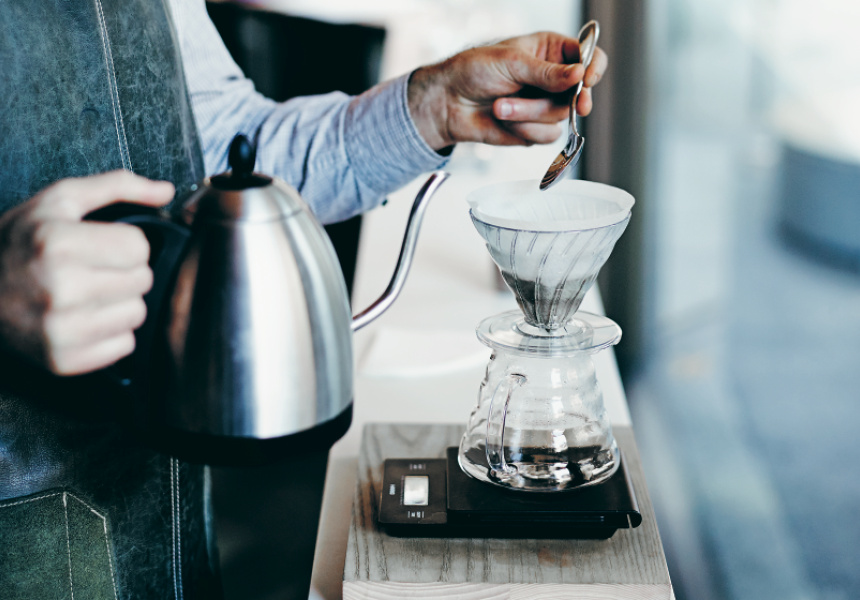"You don't need to be a connoisseur to enjoy filter coffee," says Andrew Kelly, owner of Small Batch Roasting Co., Filter, Counter and Auction Rooms cafe.
"Filter coffee (in this case pour-over) is so simple to make at home," he says, insisting you don't need to pour water anticlockwise from a fancy Japanese pouring kettle to make a decent filter.
The equipment will cost you around the price of four coffees and it involves adding water to ground beans. The standard brew ratio for making filter coffee is 60–70 grams of coffee per litre of water, depending on the size of your grind and how strong you like your coffee.
Get the best of Broadsheet first with Today – our free newsletter. Our expert editors curate the day’s most interesting and useful stories – new restaurants, must-see exhibitions, fashion trends, travel spots and more.
SIGN UPAt home, Kelly uses a scalable version of the recipe; around 21 grams of coffee in 350 grams of water, which is enough to serve two people in small cups with refills (those who prefer a stronger brew can up it to 22 grams). Kelly uses a 2-cup pour-over cone, which will make between one and three cups, and recommends using a set of scales to precisely measure your coffee versus water ratio.
Equipment:
A pour-over cone (1, 2 or 3 cup)
Paper filters
Jug, large cup or similar
Teaspoon
Timer
Scales
Kettle
Burr grinder
Ingredients:
21g coffee beans
350g water
Method:
Set up the cone
While you wait for the kettle to boil, place the filter paper in your pour-over cone and position it directly on top of or above your cup or jug. Pour boiling water around the edges of the filter to rinse it. The water will drop into the vessel, both cleaning our filter and warming your cone and cup. Discard the water.

Photography: Mark Roper
Grind the beans
Brew your coffee within 30 minutes of grinding your beans. Kelly suggests using a burr grinder instead of a blade grinder for an even grind. Make sure it’s a medium grind, slightly coarser than for an espresso. Place the ground beans into the middle of the filter paper. They will form a ‘coffee bed’.

Make a coffee bed
Start the timer and pour about 60g of your nearly-boiling water onto the coffee bed, ensuring that every granule is evenly saturated. Stir thoroughly and allow it to rest for half a minute. This process is called ‘blooming’. Add the rest of the water (until you have 350g total) over another 30–45 seconds. Pour in a roughly circular motion, wetting all of the surface area of the coffee while avoiding pouring on the side of the cone itself. If your coffee bed is thick and dry when you begin to pour, stir it a little to help incorporate the water and coffee.

Stir it
After all of the water has been poured into the cone, settle the coffee bed by lifting the cone and lightly tapping it once or twice on top of the cup or jug below. Take your teaspoon and make a couple of circular motions around the top of the water line in the cone to create a slight vortex. The remaining water should take about 2½–3 minutes to fully drain through the coffee, depending on the volume being brewed.

Drink it
When there is no longer any water visible upon the surface of the coffee bed, it’s ready to drink. Before serving, swirl it around a little. Kelly insists on leaving milk out of the picture. “Just drink it as it is. It’s sweet, there are often perceptible fruit, herbal, floral, candied nut and chocolate or toffee flavours,” he says. “You’ll taste it change as it cools.”

The Broadsheet Cookbook includes 80 recipes from our favourite local restaurants.
Buy The Broadsheet Cookbook now and experience the best of Melbourne dining at home.

